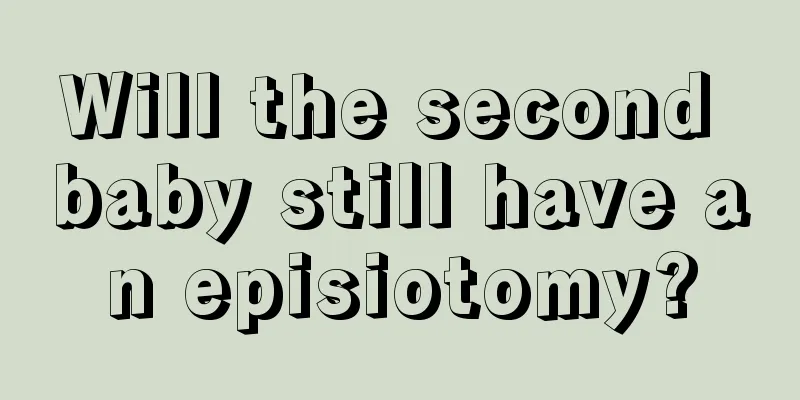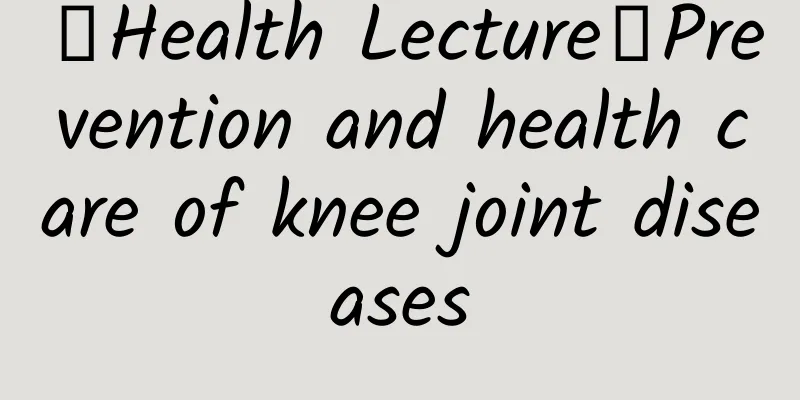Will the second baby still have an episiotomy?

|
Women who are pregnant with their second child always have a concern: if the first child was delivered by episiotomy, will the second child also be delivered by episiotomy? Episiotomy is done because the fetus is too large to be delivered normally, which is also related to the elasticity of the pregnant woman's skin. However, having an episiotomy for the first child does not mean that the same can be done for the second. Because a woman has already given birth, her vagina will be looser, so the second child will be easier to deliver naturally and no episiotomy will be needed. Does the second pregnancy require an episiotomy? For multiparous women, since the birth canal is relatively loose due to the previous vaginal delivery, there is no need to perform an episiotomy again regardless of whether an episiotomy was performed during the first delivery. The purpose of episiotomy is to prevent complicated lacerations of the soft tissue at the vaginal outlet during delivery. The Chinese Medical Association Clinical Technical Operation Standards for Obstetrics and Gynecology stipulates that the indications for episiotomy are as follows: 1. Precursory measures for vaginal delivery in primiparas, such as exit or low-position forceps traction and vacuum extraction of the fetal head. 2. Breech delivery for first-time mothers. 3. The second stage of labor needs to be shortened due to maternal or fetal needs, such as complications of fetal distress. 4. The vaginal opening is relatively small, the fetal head has not been delivered, and the perineum has been lacerated. Benefits of episiotomy 1. Prevent multiple perineal lacerations Even for women with good perineum elasticity, most of them will still suffer perineal laceration after delivery. Although most lacerations are superficial, at least two will occur, and most will have 3 to 4. Moreover, for a small number of women with large fetuses and quick delivery, deep lacerations may occur, such as lacerations to the anus, which may even affect their urination and defecation after delivery. Women who undergo episiotomy usually do not have a second laceration, and the edges of the incision are smooth. The healing effect and appearance after suturing are better than those of sutured wounds after lacerations. 2. Protect vaginal elasticity Because the episiotomy wound reduces the expansion of the birth canal by the fetal head, it protects the elasticity of the vagina to a certain extent. Some experts believe that this can also avoid the decline in the quality of sexual life caused by vaginal relaxation after childbirth. 3. Shorten the delivery process For the fetus, episiotomy can shorten the time of delivery, that is, shorten the time the fetal head is squeezed at the vaginal opening, which can reduce the occurrence of fetal hypoxia. |
<<: How long does it take for the second baby to have fetal movement
>>: The genitals always have red bumps
Recommend
If you have urticaria, do you need to avoid certain foods?
Not really There are many misunderstandings about...
What to eat to improve ovarian function
We all know that women's ovaries are particul...
Why does vaginal candidal infection recur?
Candidiasis vaginitis is a relatively common gyne...
How long does it take for ovulation to occur after menstruation?
The problem of pregnancy is a huge problem that t...
Is it easy to have Down syndrome if you often play with your mobile phone?
Expectant mothers all hope to have a beautiful gi...
Ovulation test strips with double bars during menstruation
It is quite common to see a positive result on th...
How do women do anal exercises?
Most women in life suffer from hemorrhoid-type di...
Why does ovulation bleeding occur?
When it comes to ovulation bleeding, people gener...
What are the practical rules for eating hot pot? What are the benefits of eating hot pot in winter?
In 2014, Chongqing hotpot became very popular on ...
Adult female acne
In life, we will find that the probability of you...
Endometrium 8 one week after medical abortion
Most women who choose medical abortion are young ...
Discharge of yellow-green secretions
As for the secretions from female friends' pr...
How many days does the stringy vaginal discharge last during ovulation?
Vaginal discharge is a reflection of whether ther...
Can your fat be broken down by not eating staple foods? Uncover the truth about the ketogenic diet!
Losing weight can be said to be a lifelong career...
MediaPost: Video ads account for 10% of mobile ads for the first time
According to Opera Mediaworks' October 22 rep...


![[Health Science] 3.21 World Down Syndrome Day | Prevent Down Syndrome and Care for Children with Down Syndrome](/upload/images/67f14fb07693f.webp)






